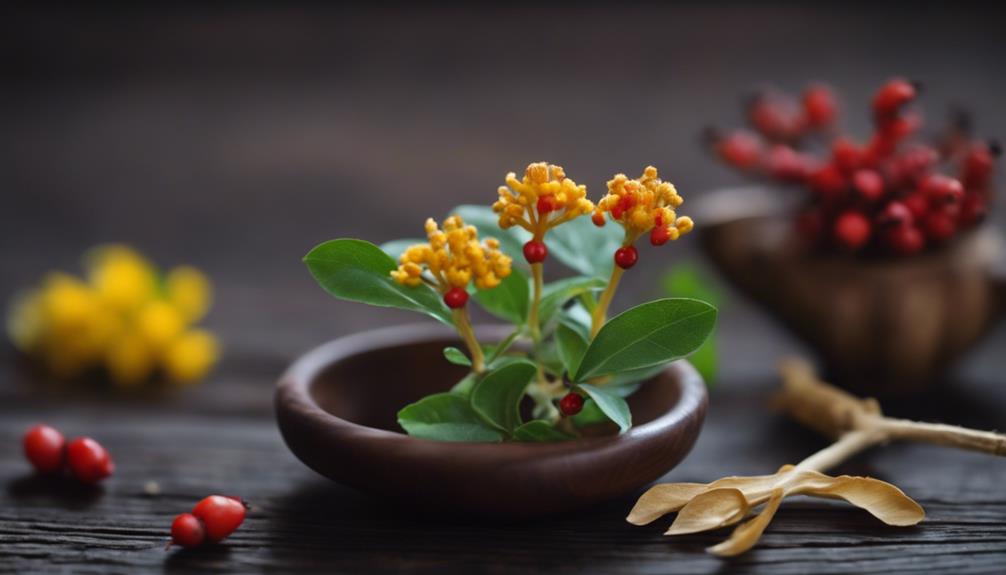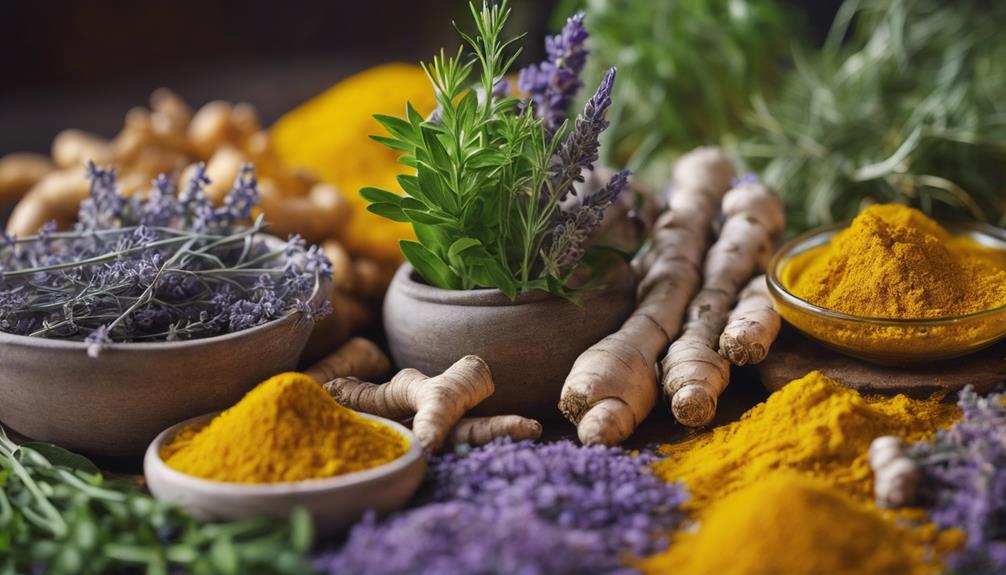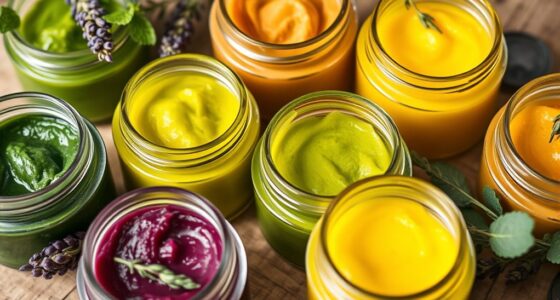When it comes to combating chronic fatigue, Astragalus, Ashwagandha, and Licorice Root are standout herbs. Astragalus, a potent immune-booster with antioxidant properties, helps alleviate chronic fatigue symptoms. Ashwagandha, known for stress relief and essential enhancement, supports adrenal function, promoting a sense of calm. Licorice Root provides a natural energy boost through glycyrrhizin, regulating cortisol levels while fighting inflammation and oxidation. Despite their benefits, caution is advised with Licorice Root due to potential blood pressure elevation risks. These herbs offer unique solutions for combating persistent exhaustion and improving overall well-being.
Key Takeaways
- Astragalus alleviates chronic fatigue symptoms with immune-boosting properties.
- Ashwagandha relieves stress, enhances energy, and supports adrenal function.
- Licorice Root provides a natural energy boost, but caution is needed due to potential risks.
- Consult a healthcare provider before using Licorice Root for chronic fatigue relief.
- Incorporating these herbs holistically improves overall quality of life and combats persistent exhaustion.
Astragalus: Immune-Boosting Herb
Astragalus, an immune-boosting herb, is commonly utilized in Traditional Chinese Medicine to enhance overall health and well-being.
This herb has been particularly effective in addressing symptoms associated with chronic fatigue syndrome, such as fatigue, weakness, and immune system dysfunction. Rich in antioxidants, polysaccharides, and saponins, astragalus exhibits immune-modulating properties that can aid in combating these issues.
Research indicates that astragalus may play a significant role in reducing inflammation, boosting energy levels, and improving the body's capacity to manage stress effectively.
Ashwagandha: Stress-Relieving Herb

Known for its stress-relieving properties, Ashwagandha is an adaptogenic herb that helps the body cope with physical and mental stress.
For individuals battling chronic fatigue syndrome, Ashwagandha may offer a natural solution to boost energy levels and reduce fatigue.
Research indicates that this herb can support adrenal function, essential for managing stress responses and maintaining peak energy levels.
In traditional Ayurvedic medicine, Ashwagandha has been utilized to enhance stamina, endurance, and overall vitality.
The active compounds in Ashwagandha, such as withanolides, play a key role in regulating the body's stress response, promoting a sense of calm and relaxation.
By incorporating Ashwagandha into a daily routine, individuals may experience improved stress management, increased energy, and a greater sense of well-being.
Embracing the benefits of this potent herb could be a valuable addition to a holistic approach in combating chronic fatigue and enhancing overall quality of life.
Licorice Root: Energy-Supporting Herb

Licorice root's rejuvenating properties offer a natural boost in energy levels, making it a valuable herb for combating fatigue, especially in chronic conditions like Chronic Fatigue Syndrome (CFS). This herb contains glycyrrhizin, a compound that plays a role in regulating cortisol levels and supporting adrenal function, which are pivotal factors in managing fatigue. Additionally, licorice root exhibits anti-inflammatory and antioxidant effects, helping to reduce inflammation and oxidative stress commonly associated with chronic fatigue.
However, caution is advised when using licorice root due to its potential to raise blood pressure and interact with certain medications. It's advisable to consult a healthcare provider before incorporating licorice root into your routine.
Licorice root can be consumed in various forms such as teas, supplements, or herbal formulations to help support energy levels and combat fatigue in chronic conditions like CFS. Its energy-boosting properties make it a promising option for individuals seeking natural relief from persistent fatigue.
Frequently Asked Questions
What Herb Is Best for Chronic Fatigue?
For chronic fatigue, we recommend ginseng, astragalus, and rhodiola rosea. These herbs provide energy, immune support, and mental clarity. Consult a healthcare provider for personalized advice on incorporating these herbs into your routine for best relief.
What Is the Strongest Herb for Energy?
Ginseng is the strongest herb for energy. It's renowned for enhancing physical and mental stamina, combating fatigue, and boosting vitality. Ginseng's adaptogenic properties support energy levels and help manage stress-related fatigue, making it a popular choice.
How I Cured My Extreme Fatigue?
We managed extreme fatigue by incorporating adaptogenic herbs like ashwagandha, rhodiola, and licorice root. These herbs regulated our stress response, boosted energy levels, and improved overall well-being. Consulting a healthcare provider is essential for personalized relief.
What Is the Most Effective Treatment for Chronic Fatigue?
Wondering what the most effective treatment for chronic fatigue is? A combination of cognitive behavioral therapy (CBT) and graded exercise therapy (GET) tailored to individual needs can lead to significant improvements in symptoms.
Conclusion
To sum up, integrating Astragalus, Ashwagandha, and Licorice Root into your daily routine can provide effective relief for chronic fatigue. These herbs work synergistically to boost immunity, reduce stress, and support energy levels.
Just as a well-oiled machine functions at its peak performance with the right components, our bodies can also benefit from the natural support these herbs offer.
Embrace the power of nature to combat chronic fatigue and reclaim your vitality.










